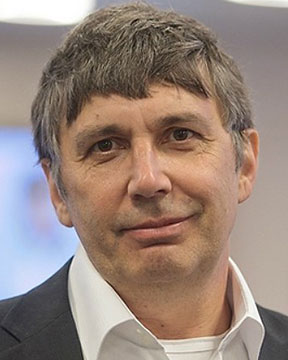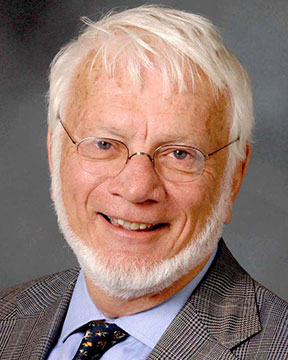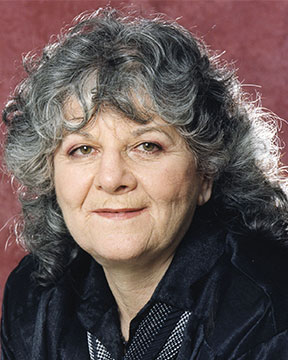



















 |
Tetiana PrikhnaInstitute for Superhard MaterialsHot Pressed Aluminum Dodecaboride- And Boron Carbide-based Ceramics 4th Intl. Symp. on New and Advanced Materials and Technologies for Energy, Environment and Sustainable Development Back to Plenary Lectures » |
Abstract:The results of a structural and mechanical properties study of aluminum dodecaboride (a-AlB<sub>12</sub>, AlB<sub>12</sub>C<sub>2</sub>, a-AlB<sub>12</sub>-TiB<sub>2</sub>-TiC)- and boron carbide (B<sub>4</sub>C and B<sub>4</sub>C-SiC)-based ceramics, hot pressed at 30 MPa, 1950 - 2240°C, and high pressure (2 GPa) as well as high temperature (1200-1400°C) sintered and synthesized, will be under discussion. The materials can be used as protective armor or constructional ceramics for nuclear power plants, additives to the boron-carbide-based materials, or as solid fuel, abrasives, explosives, etc. [1-5]. The materials were manufactured from a-AlB<sub>12</sub>, AlB<sub>12</sub>C<sub>2</sub>, C nanopowders and B<sub>4</sub>C, SiC, TiC micropowders. The preliminary mixtures of powders were prepared using high speed planetary activator. The a-AlB<sub>12</sub> powder with and without carbon additions can be sintered to the dense state of 1200-1400°C, 2 GPa, 1 h, while the hardness of the materials was not high (12.5-17.8 GPa at 49 N-load). The AlB<sub>12</sub>C<sub>2</sub> nanopowder sintered at 1400°C, 2 GPa, 1 h contained 89 wt.% AlB<sub>12</sub>C<sub>2</sub> and 11 wt.% of admixture Al<sub>2</sub>O<sub>3</sub> (according x-ray diffraction study) and demonstrated hardness HV(49 N-load)=26.6-0.6 GPa, fracture toughness K<sub>1<i>c</i></sub> (49 N)=5.9-0.5 MPa-m0.5, density g=2.73 g/сm<sup>3</sup>. The materials obtained at 30 MPa, 2240-1950°C had much higher characteristics. γ-AlB<sub>12</sub> (94-98 wt.%, p=2.53-2.58 g/cm<sup>3</sup>) showed HV(49 N)=24.1 GPa; K<sub>1<i>c</i></sub> (49 N)=4.9 MPa-m0.5; bending R<sub>bs</sub>=336 MPa and compressive R<sub>cs</sub>=378 MPa strengths. Composite 74 wt.% AlB<sub>12</sub>C<sub>2</sub>, 22 wt% TiB<sub>2</sub> , 4 wt% Al<sub>2</sub>O<sub>3</sub> (p=3.1 g/сm3) had HV(49N)=37.65-6.74 GPa, K<sub>1<i>c</i></sub>(49 N)=5.2 MPa-m0.5, R<sub>bs</sub> = 646 MPa and R<sub>cs</sub> =795 MPa. B4C(p=2.52 g/сm3<sup></sup>) demonstrated HV(4.9 N)=40 GPa, K<sub>1<i>c</i></sub> (3-point bending)=4.89 MPa-m0,5, R<sub>cs</sub>=392 MPa, R<sub>cs</sub>=1551 MPa and B<sub>4</sub>C-20%SiC (p = 2.67 g/cm<sup>3</sup>) had HV(49 N)= 35 GPa, K<sub>1<i>c</i></sub>(3-point bending)=5.9 MPa-m0,5, R<sub>bs</sub>=474 MPa, R<sub>cs</sub>=1878 MPa. |
|